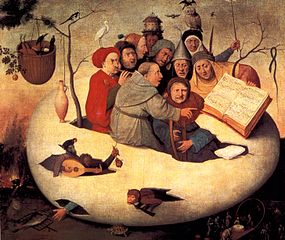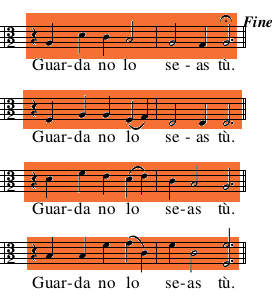

 |
 |
 SECULAR MUSIC: SECULAR MUSIC:VOCAL & INSTRUMENTAL MUSIC |
| Secular
music was music that was independent of churches. Composers themselves
often composed music to be played in courts or public parties.
VOCAL MUSIC
The main type of vocal music was: - German lied - Italian frottola - French chanson - Italian madrigal -Spanish villancico Secular vocal genres included: - Madrigal - Frottola - Caccia The vocal music was poliphonic music, usually three or four melodic lines sung by different voices. But unlike religious music, here instruments are important because they either follow the voices or replace them.  ✔ The rhythm was marked, clearly distinguishable strong beats (accents) and the weak. ✔ The text was secular and was written in the respective languages of each region. ✔ The texture was homophonic, the voices sang together, making the implementation and understanding of words easier: Homophonic texture |
|
INSTRUMENTAL MUSIC
Instrumental music became socially important because it was essential for dance and for public ceremonies. Families of instruments (Consorts) started to develop in the Renaissance. |
| In the Renaissance there were different instrumental forms: - DANCES: One of the traditional functions of the instrumentalists was naturally accompanying dance. They used to be written for four voices , in a simple homophonic texture .  In this new society, educatd people were expected to know how to dance at parties and ceremonies. In these court dances, unlike popular dances, steps or small jumps were danced. Dances were often combined in pairs: one slow and one fast. The set of dances was called a SUITE: |
| DANCE |
PAVAN |
GALLIARD |
SARABANDE |
PASSAMEZZO |
| RHYTHM |
Binary |
Ternary |
Ternary |
Binary |
| SPEED |
Slow |
Fast |
Slow |
Fast |